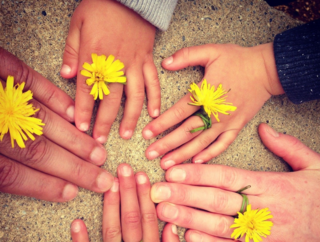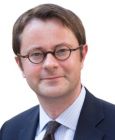Sexual Abuse
Preventing and Healing Child Abuse in Religious Communities
More work is needed to bring justice and healing.
Posted March 17, 2021 Reviewed by Chloe Williams
- Childhood sexual abuse is a widespread problem and has been a major issue in religious communities.
- Many religious institutions have begun taking steps to better safeguard children, which have led to important declines in sexual abuse rates, but much work remains to be done.
- Research is needed to determine the best strategies for prevention, to assess the best approaches to healing, and to continue to uncover the extent of the problem.
- Healing is critically needed for victims, their loved ones and communities. Even perpetrators need a kind of healing as they acknowledge and face justice for their wrongdoing.
In our last research update, we highlighted the important role religious communities play in promoting human flourishing, with religious service attendance extending longevity, preventing depression, encouraging healthy behaviors, and facilitating happiness, purpose in life, and social integration. Indeed, one of the major contributions of the Human Flourishing Program has been providing rigorous evidence to establish these links.
However, we also noted that sometimes religious communities hinder human flourishing, an especially prominent instance of this being the ongoing child sexual abuse scandals in religious institutions.
Child Sexual Abuse in Religious Communities
The problem initially came to greater public attention within the United States in 2002, through a series of investigative news stories on clergy sexual abuse – and efforts to cover it up – within the Catholic Church. Thousands of painful and horrific cases have come to light since. And over the past two decades it has also become evident that child sexual abuse is a global crisis, afflicting the Catholic Church from Ireland to Australia, and besetting many other faith traditions as well, from the Southern Baptist Convention to the Church of England to Orthodox Judaism. The lack of transparency and mismanagement of this issue have yet further harmed victims, and have led many to question their faith or leave outright. These instances of sexual abuse ought not to have happened. Much work remains to be done to address the wrongs that took place, to bring justice, and to bring healing.
Steps Taken to Address Abuse
Many religious institutions have begun to take steps to help better safeguard children. In 2002, the US Conference of Catholic Bishops published a Charter for the Protection of Children, which established norms for safeguarding children including an independent annual review of the Church’s progress. In 2015, Pope Francis launched the Papal Commission for the Protection of Minors, which is composed of leading child sexual abuse experts from around the globe, who work collaboratively with the Vatican to develop safeguarding programs and policies for Catholic institutions. The Church of Latter Day Saints, the Episcopal Church (USA), and the Southern Baptist Convention, among others, have also established comprehensive training and child safeguarding programs.
These are significant developments, which will have a lasting impact on these institutions and help to prevent future abuses. Indeed, rates of abuse within the Catholic Church, for example, appear to have decreased rather substantially since 2002. Just as the media did important work in uncovering these problems, it should also highlight and encourage the work that has been done in trying to find solutions. However, the more recent successes that have taken place with prevention do not excuse the wrongdoing of the past, nor do they heal those who have already suffered, nor do they bring justice, but they are important steps in the transition from a culture of secrecy to one of prevention, accountability, and transparency. They help ensure that such things are less likely to happen again in the generations ahead, even though more work remains to be done.

Childhood Sexual Abuse Outside of Religious Communities
Child sexual abuse is of course a pressing issue outside of religious contexts as well. Non-religious organizations have faced abuse crises of their own: in recent years, there have been widely publicized reports of child sexual abuse in, e.g., primary and secondary schools, the U.S. Gymnastics Association, and the Boy Scouts. The prevalence of pedophilia in the adult male population is estimated at 5%, which is similar to or in some cases greater than estimates of abuse among Catholic priests (e.g., 4% in the United States, 4.4% in Germany, 7% in Australia). According to the CDC, approximately 1 in 4 girls and 1 in 13 boys experience child sexual abuse at some point in childhood (perpetrated, in 91% of cases, by a family member or someone close to the family).
Because of the shame, stigma, and fear associated with their experience, 60% or more of victims never disclose their abuse. If they do not get the help they need to heal, these individuals may experience long-term consequences to their physical health, mental health, and well-being.
However, that this problem is widespread in no way excuses what has taken place within religious communities. Such communities – in their calling to provide moral exemplars, to reflect upon and promote high ethical standards, and to point towards the highest goods, towards God and the transcendent – should be held to especially high standards of accountability.
Next Steps for Healing and Prevention
Much work remains to be done. Research is needed to continue to uncover the extent of the problem, to determine the best strategies for prevention, to assess the best approaches to healing, and understand how this might vary by context and person. While considerable progress has made in improving efforts for prevention, we know much less about, and arguably fewer efforts have been made towards, providing healing for those who have previously suffered abuse. Communities need to be able to share best practices. The best thinking from psychology, counseling, public health, ethics, and moral theology needs to be brought together to help shape the most effective approaches to healing and to prevention.
Perhaps more subtly, we also need to better understand the forces that have created these problems to begin with. Human sexuality, in and of itself, is a tremendous good. Handled properly, it of course is responsible for future generations and the continuation of civilization. Sexual intercourse, moreover, has an extraordinary power to bring about an intimate union between two people. And it is probably for these reasons that sexual union can bring such intense pleasure and joy.
Yet its very power and our strong desire for this pleasure are also what arguably allow it to be so easily corrupted. When what is sought is not life-giving union, but simply the use of other as an instrument for one’s own satisfaction, sex can also become a source of dehumanizing oppression and violence. Indeed, it is this corruption that we see in the sexual abuse scandals. As we seek to discern the paths toward preventing and healing child sexual abuse, it will be crucial to understand the power of sexuality, the societal conditions that lead to its corruption, and even its relation to the difficult but often noble calling of a life of celibacy devoted to the service of others.
Healing and justice for victims are paramount, though they are too rarely sought, and even more rarely achieved. More work thus needs to be done to bring justice and to bring healing. Perpetrators must face justice, but they also stand in profound need of healing and reform. The crimes they commit are an indication that something has gone terribly wrong in their hearts and minds. Healing is also needed for those who may have been alienated by the abuses that took place. Healing is needed for the communities which have been injured by abuse, and for our society’s broader attitudes toward sexuality.

To begin to better understand this complex web of forces and harms, and to find the right paths forward toward healing and prevention, we are organizing a symposium on “Faith and Flourishing: Strategies for Preventing and Healing Child Sexual Abuse.” A single symposium can only go so far in addressing problems of this complexity. However, we believe that these discussions, which are too often conducted either in fearful whispers or bitter invective, would benefit from a patient, truthful, and humble discussion. We need more open sharing of stories, research, ideas, and best practices to bring better prevention and better healing. We hope that this symposium will facilitate further work on this critical topic, and will help bring healing to victims, to religious communities, and to society at large. And we hope that that healing will thereby empower religious communities, and all institutions serving children and dedicated to promoting flourishing, to better and more safely carry out their important work.
Tyler J. VanderWeele, Director
Jennifer Wortham, Symposium Chair
Brendan Case, Symposium Co-Chair
Human Flourishing Program
Harvard University




